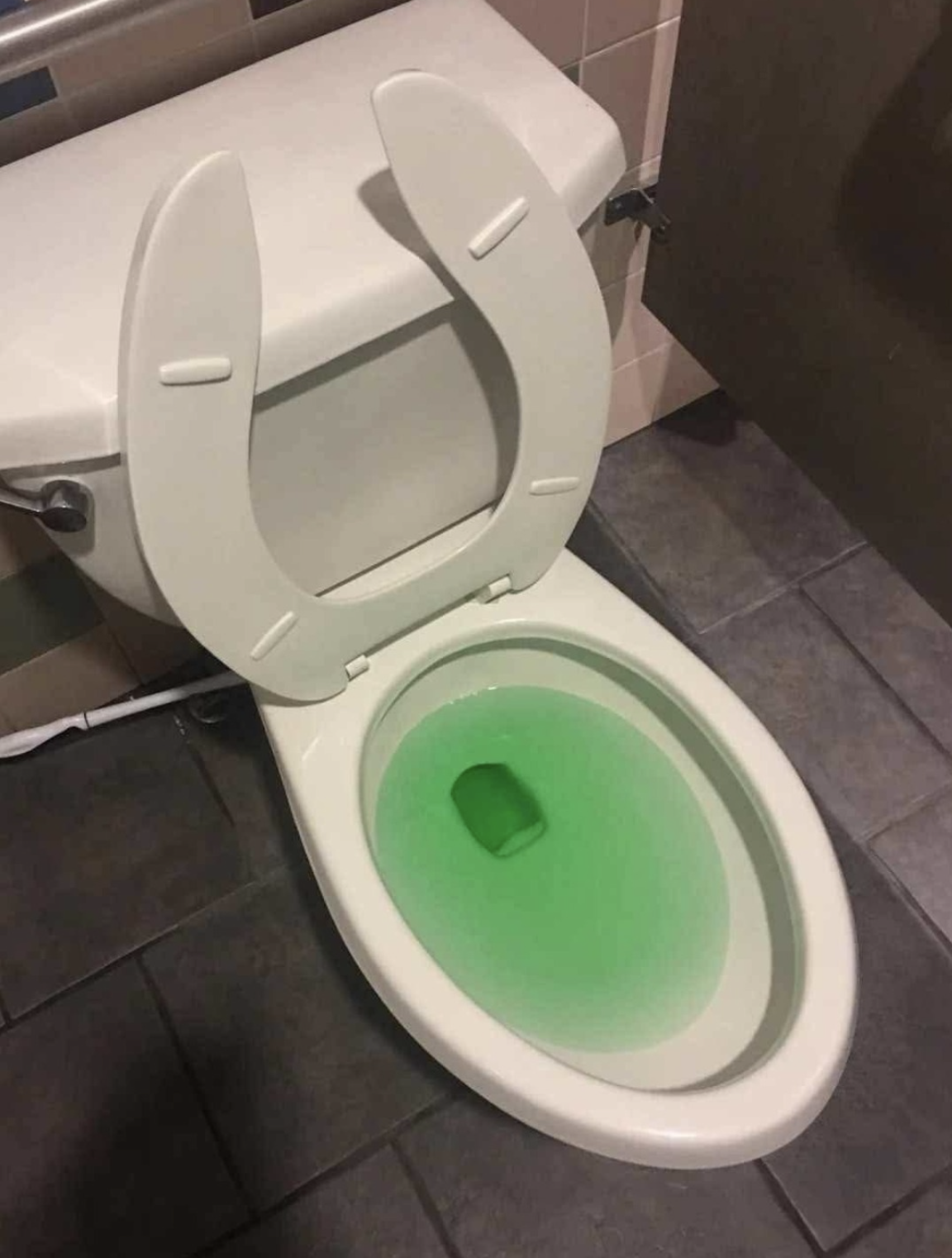🧴 Why Dish Soap Works (It’s Science, Not Magic)
Dish soap is engineered to break down oils, fats, and grime — which means it’s uniquely suited to tackle common toilet clogs caused by:
Paper buildup
Wipes (even “flushable” ones)
Grease or oily residue
Stool that’s too dense
When poured into a clogged toilet, dish soap:
Lubricates the pipe, helping the blockage slide through
Softens paper and waste, making it easier to flush
Reduces surface tension, allowing water to penetrate the clog
Breaks down oily films that trap debris
And when you add hot (not boiling) water?
You create a gentle, flushing force — like a mini waterfall inside the drain — that helps push everything through.
✅ No splashing. No mess. No plunger face.
🛠️ What You’ll Need
Liquid dish soap
½ cup — any grease-fighting brand (Dawn is legendary)
Hot tap water
1–2 gallons — hot, but
not boiling
(can crack porcelain)
Bucket or large pitcher
For safe, controlled pouring
Optional: Baking soda + vinegar
For extra power on tough clogs
⚠️ Never use boiling water — it can crack your toilet bowl or damage PVC pipes.
🚽 Step-by-Step: How to Unclog a Toilet Without a Plunger
Step 1: Pour in the Dish Soap
Pour ½ cup of liquid dish soap directly into the toilet bowl
Let it sink down — it may take 30 seconds to reach the clog
Don’t flush — just let it work
✅ Pro Tip: Use a grease-cutting formula like Dawn — it’s the gold standard for plumbing pros.
Step 2: Wait 20–30 Minutes
Let the soap penetrate the clog
It’s softening, lubricating, and breaking things down
No need to stir or flush — just be patient
✅ For stubborn clogs: Sprinkle in ½ cup baking soda, then 1 cup vinegar before the soap — let it fizz for 10 mins, then add soap.
Step 3: Add Hot Water
Heat water on the stove or kettle until very hot (140–160°F) — not boiling
Carefully pour 1–2 gallons into the bowl from waist height
This creates pressure — like a silent flush — to push the clog through
✅ Why it works: The hot water boosts the soap’s power and creates a flushing force without splashing.
Step 4: Let It Work
Wait 10–15 minutes
If the water level drops — success!
Flush once to test — if it drains smoothly, you’re done
🔁 If not? Repeat the process once more.
🧹 Bonus Tips for Tough Clogs
✅
Use a wire hanger (unwound)
Gently push through soft clogs — don’t scratch the porcelain
✅
Let gravity help
Fill a bucket with hot water and pour it from height — mimics a flush
✅
Avoid chemical drain cleaners
They can damage pipes and don’t work well on toilet clogs
✅
Prevent future clogs
Use less toilet paper, avoid wipes, flush twice if needed
🚫 When to Call a Plumber
This method works for most common clogs — but not all.
Call a pro if:
The toilet keeps backing up
Water rises dangerously high
You smell sewer gas
Multiple drains are slow — could be a main line clog
✅ Don’t force it. Some problems need a snake or professional tool.
💬 Final Thoughts: Sometimes the Best Fix Is the Simplest One
We panic.
We overthink.
We reach for extreme solutions.
But the truth is:
Some of the best fixes come from the most humble tools.
You don’t need a plunger.
You don’t need chemicals.
You don’t need to call a plumber (yet).
Just dish soap and hot water — two things you already have.
So next time your toilet won’t flush…
Don’t stress.
Don’t plunge.
Don’t flee.
Just pour.
Wait.
Flush.
Because sometimes, the difference between “disaster” and “fixed in 30 minutes”…
Isn’t in the tool.
It’s in the soap.
And once you know this trick?
You might just feel — and stay — a little more in control.
